#xenopus laevis
Note
Thoughts on African clawed frogs?
Xenopus laevis have frankly too many chromosomes (they're tetraploid).
Way bigger than you would expect if you're mostly familiar with Xenopus tropicalis and Hymenochirus.
SO SLIPPERY.
Surprisingly good at backing out of tight spaces.
Those legs go so far forward when they need to.
Very dainty claws.
Constantly confused expression.
Weird way to get a pregnancy test done, but okay.
Possible drivers of the global spread of chytrid and thus loss of dozens of amphibian species but that's not their fault. We just really wanted to use them for pregnancy tests and other lab things. It's our fault.
2000–3000 eggs per clutch is a lot of eggs.
365 notes
·
View notes
Text
little man

49 notes
·
View notes
Text
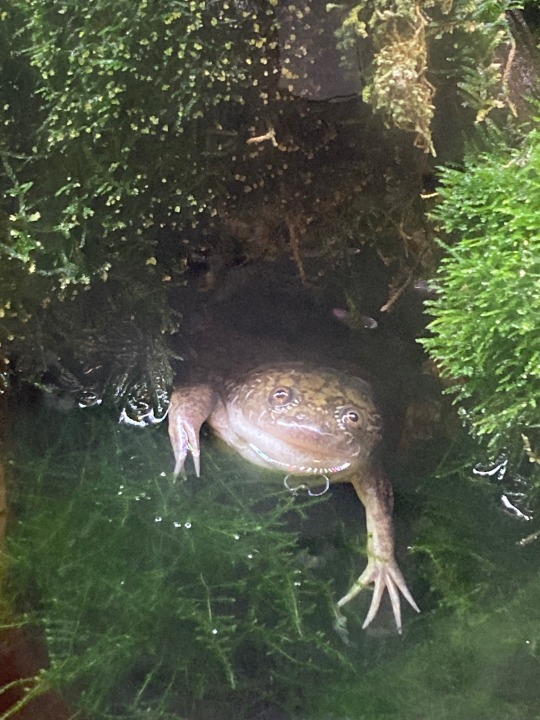

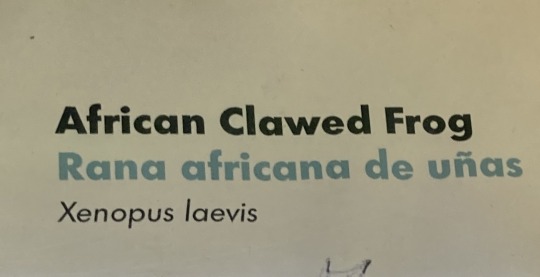
14 notes
·
View notes
Text

I'm a frog grandma now!!!
0 notes
Note
Animal behaviour? Do you have to study that too if you intend to major in psychology?
it’s not a required class for psych majors at my uni! it’s science elective, which is a category that is required where i am— you can take just about any science elective ie physics or chemistry for this credit but animal behavior is the only one that worked w my schedule this semester
12 notes
·
View notes
Text
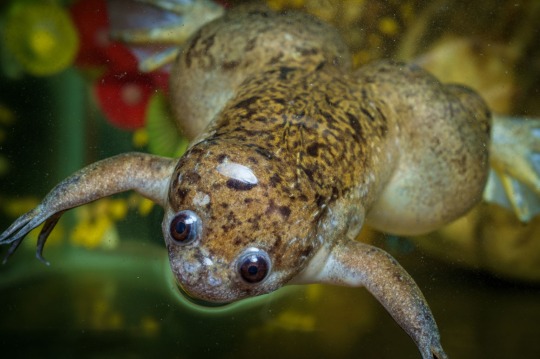
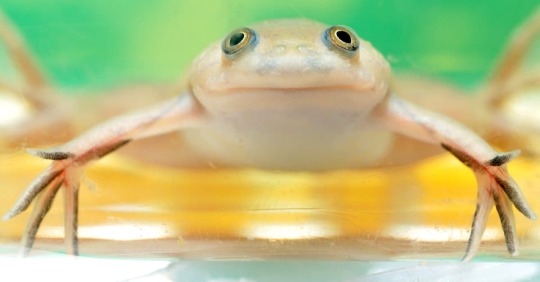
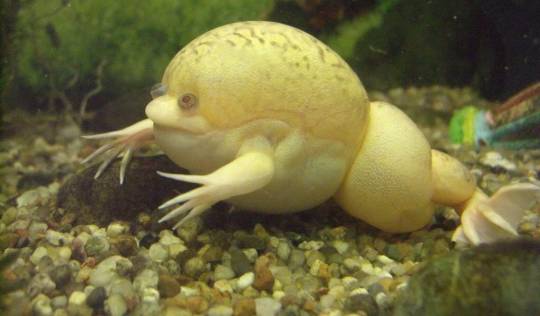
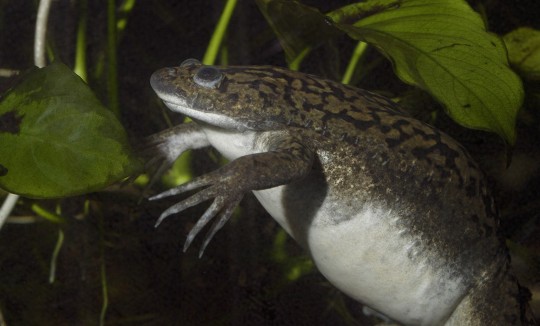
African Clawed Frog (Xenopus Laevis)
Honestly I could've written pages about these guys, there's so many cool facts about them. Very clumsy on land, and so these lads tend to stick to water or - if dried up - can bury themselves in the mud for up to a year! Their skin produces a type of antibiotic that heals their wounds rapidly. They lack tongues, and so have to push food into their mouths with their tiny unwebbed hands. The males also lack vocal cords, and so have to click to attract females - they rarely respond, but their rejection is a slow ticking sound...which seems more like a warning imo. These guys are an invasive species in many habitats, but endemic along the African Rift Valley south of the Sahara Desert, as well as South Africa, Namibia, and Angola. They're also a species of least concern!
90 notes
·
View notes
Text
Uncharismatic Fact of the Day
Think all frogs have long tongues? Think again! The frogs in the family Pipidae don't have any tongues at all! This group is considered extremely primitive, emerging in the early Cretaceous, and members are almost completely aquatic.
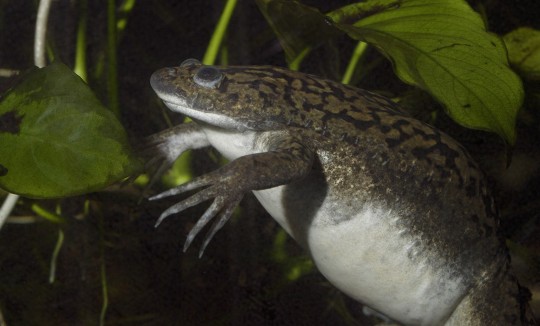
(Image: An African clawed frog (Xenopus laevis) by Jessie Cohen)
If you like what I do, consider leaving a tip or buying me a ko-fi!
101 notes
·
View notes
Text
Terraforming Biodiversity
The seedships that arrived at Alpha Centauri had limited space on board for genetic samples, with parahuman and uplift DNA given the highest priority. The unfortunate result being that the vast majority of Old Terra's rich biodiversity died with that planet, leaving Secland and later terraformed worlds an extremely limited gene pool to work with.
During the terraforming process scientists struggled to fill in the niches left open by a gene bank weighed heavily towards domesticated and laboratory test animals. The possibility of making "downlifted" versions of the uplifted species was proposed but almost universally rejected by the uplifts in question. Instead, the Bureau of Ecosystem Management offered jobs to uplifts filling the ecological roles of their progenitors. This strategy worked surprisingly well, especially with apex predators such as dolphins.
Another approach was to modify the animals they did have using the non-human genes that had been incorporated into parahuman genomes. For instance Secland "bats" are actually heavily modified mice while the procyon is a fox given hand-like paws and a ringed tail.
Late in the terraforming process scientists made a breakthrough that would simplify later efforts. Large complexes of genes that could be activated or deactivated with specific epigenetic triggers were added to the genomes of many species that could produce massive physiological changes in later generations. That way a single breeding colony of ultra-ferrets could give birth to 20-centimeter long mini-ferrets, semi-aquatic ferr-otters, or two-meter mega wolverines as the ecosystem needed.
List of source species:
Mammals:
Cat (Felis catus)
Cattle (Bos taurus)
Dog (Canis lupus familiaris)
Ferret (Mustela furo)
Red fox (Vulpes vulpes)
House mouse (Mus musculus)
European rabbit (Oryctolagus cuniculus)
Sheep (Ovis aries)
Birds:
Budgerigar (Melopsittacus undulatus)
Canary (Serinus canaria)
Chicken (Gallus domesticus)
Rock dove (Columba livia)
Zebra finch (Taeniopygia guttata)
Reptiles:
Green anole (Anolis carolinensis)
Spectacled caiman (Caiman crocodilus)
Fish:
Goldfish (Carassius auratus)
Zebrafish (Danio rerio)
Amphibians:
African clawed frog (Xenopus laevis)
Axolotl (Ambystoma mexicanum)
Bullfrog (Rana catesbeiana)
Tiger salamander (Ambystoma tigrinum)
Arthropods:
Fruit fly (Drosophila melanogaster)
House cricket (Acheta domesticus)
Yellow mealworm beetle (Tenebrio molitor)
2 notes
·
View notes
Text
The Ancestors
Before divine selection could take place and the Tetrarch could begin, the deities had to choose what would inhabit their world. They would need to be adaptable enough to survive the ecological shock, and able to form a functional ecosystem from the beginning, but the rest was up to the deities’ own inscrutable choices. The majority of colonists were sourced from Earth’s Holocene epoch, but a handful of the founders were inexplicably from various other time periods. To allow more ecologically complex organisms to survive colonization, the cherry-picked settlers were introduced in successive waves, each supporting the next. The first assisted in the final steps of terraforming, the hardiest microbes starting or regulating such vital processes as oxygenation and the carbon cycle. Each wave that followed increased in size and diversity, until the Tetrarch’s founding menagerie was complete. This eclectic sample of Earth would give rise to every oddity making up the Tetrarch’s biosphere, the primordial ancestors from which all of its life descends. What follows is a list of these ancestors at the time that the Tetrarch was ready to begin, not including the myriad unicellular organisms and viruses whose descendants are also important.
Plants and Algae
-Brazilian Waterweed (Egeria densa)
-Coconut Palm (Cocos nucifera)
-Erect Prickly Pear (Opuntia stricta)
-Grasses (~ 5 species)
-Hooker’s Chives (Allium hookeri)
-Leptosporangiate Ferns (~ 5 species)
-Lithops (~ 5 species)
-Mosses (~ 5 species)
-Macroscopic Algae (~ 25 species, including Undaria and Acetabularia)
-Southern Magnolia (Magnolia grandiflora)
-Spanish Moss (Tillandsia usneoides)
-Turtlegrass (Thalassia testudinum)
Vertebrates
-African Clawed Frog (Xenopus laevis)
-Banded Knifefish (Gymnotus carapo)
-Conodonts (~ 5 species)
-Hapalops sp.
-Longspined Porcupinefish (Diodon holocanthus)
-Pacific Viperfish (Chauliodus macouni)
-Spiny Softshell Turtle (Apalone spinifera)
-Star-Nosed Mole (Condylura cristata)
Arthropods
-Atlantic Horseshoe Crab (Limulus polyphemus)
-Coccus Soft Scales (~ 5 species)
-Copepods (~ 25 species)
-Earwigs (~ 5 species)
-Goose Barnacles (~ 5 species)
-Hoverflies (~ 5 species)
-Lacewings (~ 5 species)
-Mites (~ 25 species)
-Pseudoscorpions (~ 5 species)
-Rainbow Mantis Shrimp (Pseudosquilla ciliata)
-Springtails (~ 15 species)
-Water Fleas (~ 5 species)
Molluscs
-Applesnails (~ 5 species)
-Hippurites sp.
-Sea Angels (~ 5 species)
-Sea Butterflies (~ 5 species)
-Venus Clams (~ 5 species)
Other Animals
-Arrow Worms (~ 5 species)
-Brittle Stars (~ 5 species)
-Clitellate Worms (~ 15 species, including leeches, earthworms, and naidids)
-Demosponges (~ 10 species)
-Dugesia Planarians (~ 5 species)
-Nematodes (~ 300 species)
-Rotifers (~ 5 species)
-Tardigrades (~ 5 species)
-Velvet Worms (~ 5 species)
Fungi
-Collared Earthstar (Geastrum triplex)
-Lichens (~ 5 species)
-Molds (~ 50 species)
#biology#fantasy#ecology#speculative biology#spec evo#spec bio#speculative evolution#the tetrarch#seed world#worldbuilding#artificial selection
6 notes
·
View notes
Note
Another for Sleepover Saturday: rank common lab animals (rats, mice, fruit flies etc)
MODEL ANIMALS RANKED, WORST TO BEST:
5. Mouse (Mus musculus) - Absolutely horrible. People think this is the best one because they're mammals, so they're the closest of the ~classic~ models to humans. To that I say: who fucking cares? Mice take too much work to take care of and they don't make enough babies and they smell. Get out. Worst model organism.
4. Zebrafish (Danio rerio) - Listen. Don't ever work with a vertebrate. These guys are also horrible. They take SO MUCH WORK and care and then doing anything to them is annoying. You know that scene in Finding Nemo where all the fish swim down? They do this. Why do they do this, just get in the net, I'm trying to get you laid. Take longer to get to reproductive age than mice, but they have hundreds of eggs at once, so they win.
3. Clawed frog (Xenopus laevis) - The allure of having hundreds of frog friends is ruined when I remember this is a TRAP and they have all the same problems as ALL VERTEBRATES and that is the the amount of care these suckers need.
2. Fruit flies (Drosophila melanogaster) - Doesn't have a spine, and so no one cares what you do to them. Fantastic. Can just be kept in tubes; no elaborate facilities and dedicated techs necessary. Drawbacks include that they're tiny and they can escape and then haunt the lab.*
1.Roundworm (Caenorhabditis elegans) - Probably the least charismatic animal possible but consider: you can just toss these guys in toxic goo and no one cares. Can be grown in goddamn petri dishes. Super short life cycle. Smaller than a fruit fly, though, so good luck with that.
*I found a fruit fly wedged into the parafilm around a bacterial dish once and I have never forgiven the flies since. What the F U C K
15 notes
·
View notes
Note
Fun fact about frogs! Aposematic colouring is the term for coloured frogs that possess deadly coloration. It's to warn off predators from eating them.
Also, the cell division of frogs from birth is fascinating—it all started with Xenopus laevis, the African clawed frog. The egg cell is much larger than the sperm, wherein the entrance of the sperm cell is the cue for the cell development and it's the "positional signal" that determines the back-to-belly axis ^^
The frog embryo is said to be a "cell division machine" because rounds of cells division just go on and on. I think this experiment set-up also inspired the Spemann-Mangold organiser, where the term "induction" was spawned wherein the cells talk to each other to alter one another's fate <3
Hope this helps?? Sorry aa
-♠️🃏
OH WOW. This is all news to me, Nonny, but I’m living for it. This is really cool!!
This will definitely help, for sure! I’m always willing to hear more frog facts, too!
Honestly, these are gonna go towards one of my RoboFizz OCs, Ribbit. He has a preoccupation with frogs.
Thank you so much for the help!! <333
And again, no need to apologize! I’m always happy to hear from you!
#Stolas Is That You? (Answered Asks)#Mr. Meek Speaks (Key Talk)#Hey There Nonny! (Aroace Fizzarolli Anon)
1 note
·
View note
Text
He's gone and squished himself
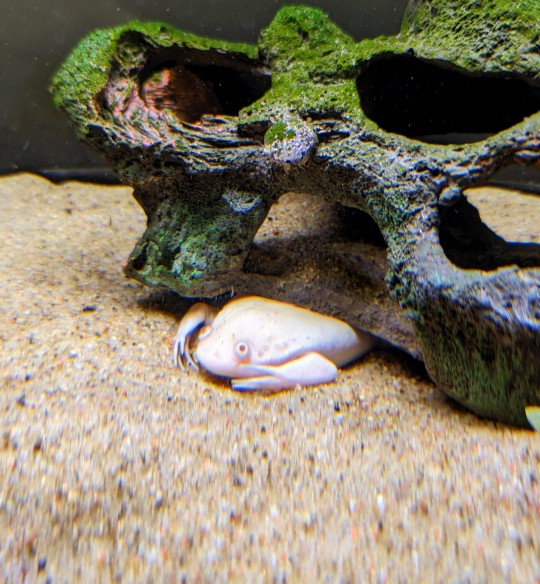
3 notes
·
View notes
Quote
Information for organismal patterning can come from a variety of sources. We investigate the possibility that instructive influences for normal embryonic development are provided not only at the level of cells within the embryo, but also via interactions between embryos. To explore this, we challenge groups of embryos with disruptors of normal development while varying group size. Here, we show that Xenopus laevis embryos are much more sensitive to a diverse set of chemical and molecular-biological perturbations when allowed to develop alone or in small groups, than in large groups. Keeping per-embryo exposure constant, we find that increasing the number of exposed embryos in a cohort increases the rate of survival while incidence of defects decreases. This inter-embryo assistance effect is mediated by short-range diffusible signals and involves the P2 ATP receptor. Our data and computational model emphasize that morphogenesis is a collective phenomenon not only at the level of cells, but also of whole bodies, and that cohort size is a crucial variable in studies of ecotoxicology, teratogenesis, and developmental plasticity.
Embryos assist morphogenesis of others through calcium and ATP signaling mechanisms in collective teratogen resistance | Nature Communications
0 notes
Text
허니컴 프리셋 한글패치 베리팩 설치
허니컴 프리셋 한글패치 베리팩 설치 방법 드릴게요.
허니컴 프리셋 한글패치 다운로드 링크 <
코이카츠 스팀 패치 ILLGAMES 허니컴 다운 심야식당 보다 더 나은 편 입니다.
공략도 있고, 프리셋 경로 적용 다운 의존도 채널 허니컴 공략 허니컴 토렌트 없이 무설치로 게임 실행 가능합니다.

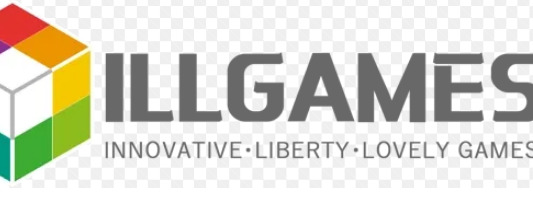

새로운 허니컴 프리셋 한글패치 베리팩 설치 연구에 따르면, 과학자들이 실험실 접시에서 돌아다닐 수 있고 언젠가는 상처나 손상된 조직을 치료하는 데 도움을 줄 수 있는 인간 세포로 작은 살아있는 로봇을 만들었습니다.
터프츠 대학(Tufts University)과 하버드 대학의 Wyss Institute 팀은 이러한 창조물을 인류로봇(Anthrobot)이라고 불렀습니다. 이번 연구는 아프리카발톱개구리(Xenopus laevis)의 배아에서 추출한 줄기 세포로 최초의 살아있는 로봇, 즉 제노봇(xenobot)을 만든 일부 과학자들의 이전 연구를 기반으로 합니다.
Tufts' School of Arts & Sciences의 Vannevar Bush 생물학 교수인 연구 저자인 Michael Levin은 "어떤 사람들은 제노봇의 특징이 그들이 배아이고 양서류라는 사실에 크게 의존한다고 생각했습니다."라고 말했습니다.
“내 생각엔 이것이 배아가 되는 것과는 아무 상관이 없는 것 같아요. 이것은 개구리가 되는 것과는 아무런 관련이 없습니다. 나는 이것이 생명체의 훨씬 더 일반적인 속성이라고 생각합니다.”라고 그는 말했습니다.
"우리는 우리 몸 세포가 가지고 있는 모든 능력을 깨닫지 못합니다."
살아있는 동안 인류로봇은 완전한 수명주기를 갖지 않았기 때문에 완전한 유기체가 아니었다고 Levin은 말했습니다.
“그것은 우리가 작업해 온 이러한 가혹한 이분법적 범주를 상기시켜 줍니다. 저게 로봇인가요, 동물인가요, 기계인가요? 이런 종류의 것들은 우리에게 별로 도움이 되지 않습니다. 우리는 그것을 넘어서야 합니다.”
이 연구는 허니컴 프리셋 한글패치 베리팩 설치 목요일 Advanced Science 저널에 게재되었습니다.
기젬 구무스카야(Gizem Gumuskaya)는 인류로봇 제작을 도운 터프츠 대학교(Tufts University)의 박사 과정 학생입니다.
그들은 어떻게 만들었나요?
과학자들은 연령과 성별이 다른 익명 기증자의 기관 또는 기관에서 채취한 성인 인간 세포를 사용했습니다. 연구자들은 코로나19와 폐 질환에 대한 연구로 인해 상대적으로 접근하기 쉽기 때문에 이러한 유형의 세포에 초점을 맞추었고, 더 중요하게는 과학자들이 세포를 움직일 수 있게 만들 것이라고 믿었던 기능 때문에 공동 저자인 Gizem이 말했습니다. Tufts의 박사과정 학생인 Gumuskaya.
기관 세포는 앞뒤로 흔들리는 섬모라고 불리는 털 같은 돌기로 덮여 있습니다. 그들은 일반적으로 기관 세포가 폐의 공기 통로로 들어가는 작은 입자를 밀어내는 데 도움을 줍니다. 이전 연구에서도 세포가 연구에 널리 사용되는 세포 덩어리인 오가노이드를 형성할 수 있다는 사실이 밝혀졌습니다.
키메라 원숭이 사진 CREDIT 허니컴 프리셋 한글패치 베리팩 설치 Cell Cao et al.jpg
과학자들은 두 세트의 DNA로 키메라 원숭이를 만듭니다
Gumuskaya는 기관 세포 성장 조건의 화학적 구성을 실험하고 오가노이드에서 섬모가 바깥쪽을 향하도록 장려하는 방법을 찾았습니다. 그녀가 올바른 매트릭스를 찾으면, 오가노이드는 며칠 후에 움직일 수 있게 되었고, 섬모는 약간 노처럼 행동했습니다.
“1일차, 2일차, 4~5일차에는 아무 일도 일어나지 않았지만 생물학이 보통 그러하듯이 7일차쯤에는 급격한 변화가 있었습니다.”라고 그녀는 말했습니다. “꽃이 핀 것 같았어요. 7일째에는 섬모가 뒤집혀서 바깥쪽으로 나와 있었습니다.
"우리 방법에서는 각 인류 로봇이 단일 세포에서 자랍니다."
그것들을 독특하게 만드는 허니컴 프리셋 한글패치 베리팩 설치 것은 바로 이러한 자기 조립입니다. 생물학적 로봇은 다른 과학자들에 의해 만들어졌지만, 그들은 곰팡이를 만들고 그 위에 살 수 있는 세포를 심는 방식으로 손으로 제작했다고 레빈은 말했습니다.
1 note
·
View note
Photo
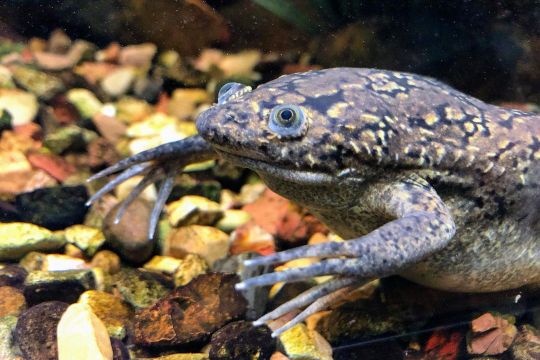
The African Clawed Frog (Xenopus laevis) is tongueless, toothless, and fully aquatic. It’s named for the claws on its hind feet which it used to tear apart its prey #africanclawedfrog #frog #frogsofinstagram #amphibians #herpphotography #zoos #zoosmatter #sedgwickcountyzoo #zoophotography #zoophoto https://www.instagram.com/p/CnhTZnmutG1/?igshid=NGJjMDIxMWI=
#africanclawedfrog#frog#frogsofinstagram#amphibians#herpphotography#zoos#zoosmatter#sedgwickcountyzoo#zoophotography#zoophoto
0 notes
